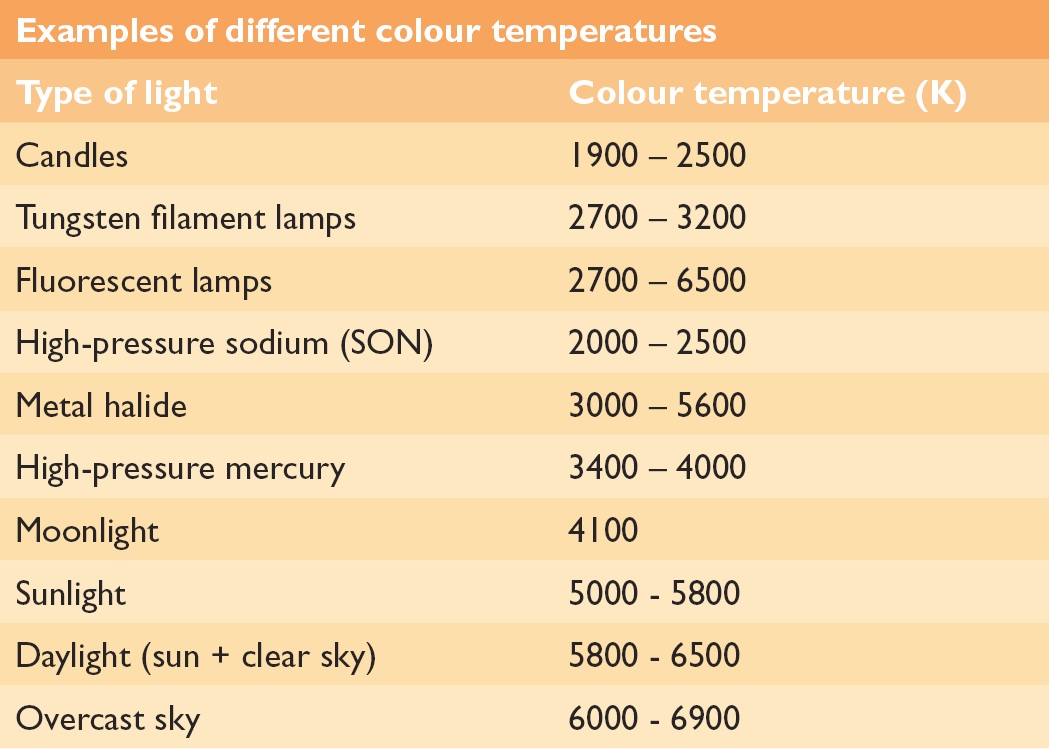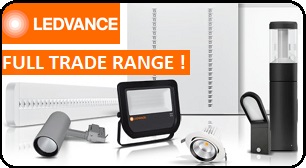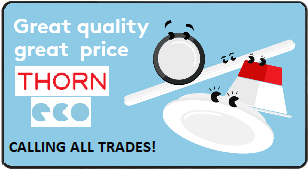Guide to LED Lighting
INTRODUCTION TO LED LIGHTING:
LED lighting is now the optimal solution for residential and commercial lighting needs. Due to massive investment over recent years (Philips has spent over $5 billion on the LED market), LED technology has matured to a point where LED bulbs (or ‘lamps’ as they are often called) deliver a truly equivalent light output to conventional incandescent, halogen, or compact fluorescent lamps.
Today’s LED lamps or tubes are strong, durable, and contain no filaments; there is no chance of shattering, breakages, or mercury contamination. Many of the market leading LED lamps have rated lives of up to 50,000 hours (50x longer than a standard incandescent light bulb) and consume up to 90% less energy than conventional lamps. The best way to understand the benefits of LED lighting is to do a cost of ownership calculation: calculate the electricity saving and the costs avoided from not having to replace blown bulbs over the lifetime of the lamp (over 10 years in many cases).
Of course, another strong argument for switching to LED lamps is because it is great for the environment. LED lamps consume up to 90% less electricity which means CO2 emissions get cut by up to 90%. So, you can slash your carbon footprint at the same time as slashing your energy bills!
LED lamp manufacturers have made it easier than ever to switch to LED lighting, by designing LED lamps with the same light output, dimensions, and cap bases as conventional lamps. This makes retrofitting a breeze. In most cases, LED lamps will slot directly into existing fixtures and fittings, and many offer comparable dimming functionality. Customers can select the colour temperature (e.g. warm white, cool white) and beam angle they prefer to match their existing set up.
Designers have also focused on LED lamp aesthetics to ensure they look as good as the conventional lamps they replace. This is especially important for candle or globe bulbs in chandeliers or luminaires, where decorative effect is important. Indeed, Philips has drawn upon inputs from chandelier makers, and intentionally designed their candle lamps to enhance the aesthetic appeal of the chandelier not only when lit but also when not, with classical slender shape and unique eye-catching lens. Quality LED lamps deliver sparkling warm light with huge energy savings and maintenance cost reductions.
You may say that compact fluorescents (‘CFLs’) are a good enough alternative. Let’s take a look: total cost of ownership of CFLs is poor, light quality is harsh (and contains harmful UV radiation), they are bulky (some say ugly!), most are not dimmable, energy efficiency is average, and the big concern is that CFLs contain toxic mercury vapor and are therefore hazardous waste. LEDs will soon overtake low energy CFL lamps as the lighting of choice.
The Energy Saving Trust advises that if everybody in the UK changed their lights to LED where possible, we would be able to save enough energy to light 5 million homes! It’s easy to see that LED lamps are the future of lighting
WARRANTY:
We are confident that you will be happy with the quality of the LED lamps we sell, which is why we provide a full manufacturer's on all lamps, bulbs, and fittings purchased on this website. Many products come with a 5 year warranty. Details of warranty terms and conditions can be found here: Warranty Terms.
If a product you purchase from us fails within the warranty period, simply send us an email (sales@novelenergylighting.com) with details of the failure and your invoice information, and we'll make sure you get a warranty replacement.
LED RETROFIT REPLACEMENT STRATEGIES:
Adhoc: you may plan to replace conventional lamps as and when they blow. This strategy is simple and effective, and minimises capital outlay. However, it is more expensive in the long term, because you are delaying the cost of ownership savings for lamps not yet replaced, and cannot take advantage of any volume discounts when buying LED lamps or fittings.
Phased: if capital cost constraints mean you need to replace lamps in phases, then its best to prioritise your lamp stock, based on a ranking of how long they’re switched on. Hospitality business owners will probably have lots of halogens that are on nearly all the time in stairwells, corridors, and lobbies. It’s important that these are replaced first, since this will deliver the largest benefit. Homeowners may find it easiest to adopt a room by room approach, starting off with highly used kitchens and living rooms.
Full retrofit: this approach is the most capital intensive but yields the greatest returns financially, environmentally, and functionally. For large retrofits (typically >100 lamps), lighting finance options are available for Energy Efficient Lighting projects. What makes this compelling is that the LED energy cost savings are often sufficient to cover the finance payments, so it becomes a great cost neutral strategy. Novel Energy Lighting offers Loan-to-Own solutions, where the capital cost of lamps, fittings, and installation are covered by finace. The loan term will typically be 2 to 4 years. During the loan, the monthly repayment simply get paid for out of the energy cost savings. Novel Energy Lighting can arrange finance. You can find details on financing options here: LED Financing
LAMP TYPES:
Lamps are either low voltage (LV = 12V) or mains voltage (MV = 230-240V). Many LED lamps are also dimmable, and will work on the majority of dimming systems, making for a simple swap-out retrofit. Please see the LED Dimming Guide below for details.
Medium Voltage Lamps:
Lamps with the following bases run directly at mains voltage, 230-240V AC:
GU10 (PAR 16) Base Candles, Globes, Lusters, GLS/Golf balls, PAR Spots
A note on BASE or SOCKET definitions:
- SES, E14 and E27 refers to type of screw socket. SES stands for Small Edison Screw, which is the same as an E14 socket (i.e. base diameter or 14mm), which is usually found on chandelier type fittings. E27 sockets are Medium Edison Screw, with a base diameter of 27mm, and are usually found on table lamps, GLS pendants or PAR fixtures.
- B15 and B22 are types of bayonet socket. B15 sockets (i.e. base diameter or 15mm) are usually found on chandelier type fittings. B22 sockets, with a base diameter of 22mm, and are usually found on table lamps or GLS pendants.
Low Voltage Lamps:
Low voltage lamp fixtures (sockets) will usually be connected to a transformer (or Driver) to reduce the mains voltage to 12V DC. Fortunately, you don’t need to touch the transformer when doing a lamp retrofit – Many 12V LED lamps are compatible with halogen transformers making it a simple retrofit. The number of lamps that can be used on a transformer is dependent on the total wattage of the lamps, which should be less than that of the total wattage capacity of the transformer. Please see the LED Lighting Transformers Guide below for details.
Lamps with the following bases run at low voltage, 12V DC:
GU5.3 (MR16) base G4 (MR11 and Capsule) base G53 (AR111) base

LED FITTINGS:
We supply the full range of Philips LED fittings, including the very popular Coreline LED range.
The new CoreLine range of LED luminaires offers stylish, energy-saving,affordable, and easy-to-install lighting solutions - viable replacementsfor traditional lighting technologies across numerous applications. Using LED lighting technology across the range allows longer lifetimes, which means reduced maintenance and fewer replacement parts, plus energysavings of up to 75% compared with traditional lighting fixtures - all leading to more sustainable lighting solutions.The quality and light levels delivered by the CoreLine range enable‘hole-for-hole’ replacement of similar traditional lighting fixtures.Simply remove the old fixture and fit the new innovative LED CoreLine solution;virtually no need for expensive rewiring or new ceiling configurations. The look and feel of CoreLine solutions is consistent - ease of installation, coupled with quality finishes across the range, ensures CoreLine is the clearchoice for LED.The CoreLine family consists of eleven quality productsDownlight, Recessed, Panel, Spot, Surface-mounted, Wall-mounted,Batten, Waterproof, High-bay, Under-shelf and Flood.
Coreline LED catalogue and product range here:
COLOUR TEMPERATURES:
Lamps and tubes are generally available in a variery of colour temperatures: the higher the colour temperature, the cooler the impression of the white light becomes. The table below provides examples of the range of colour temperatures for different light sources. As you can see, daylight has a very high colour temperature.

LED lamps generally range from 2,700K to 4,200K. LED tubes generally range from 4,000K to 6,500K
Colour temperature selection can depend on the kind of mood or atmosphere you prefer for your space:
- 2,700K = warm white (yellow white incandescent-like tone): suitable for residential or hospitality spaces where a more intimate feel is required
- 3,000K = neutral white (crisper white tones)
- 4,000K+ = cool white (bluer white tones)
- 6,500K = daylight: suitable for fluorescent tube replacement in utilitarian spaces
BEAM ANGLES:
LED Lamps are generally compromised of single or multiple light emitting diodes on a chip. The light is dispersed in a way that mimics conventional incandescent or halogen light sources using complex lenses. LED downlights (or spots) generally come with a variety of beam angle options to mimic the light disperson from halogen reflectors. Selection of beam angle depends on application and ceiling height. Narrow beams would tend to be employed for accent (spot), product, or display lighting, or where ceilings are high and the beam has more room to disperse. Wide beams would tend to be employed for general distributed room lighting, or where ceilings are low and the beam has less room to disperse.
Beam angles range from 15 degrees to 120 degrees, but options are lamp model dependant. Living spaces generally benefit from beam angles of 36 degrees and upwards.
LED TRANSFORMERS:
For details on transformers for 12V LED lamps (conversion of voltage from mains to 12V), please follow the link: LED Transformers.
Tip: if any of your LED lamps flicker, please check whether the lamp or the transformer is the problem by plugging non-flickering lamps into sockets where lamps are flickering. This process of elimination will help you identify where any problems lie.
LED DIMMERS:
For details on specifying dimmer systems for LED lamps, including a list of known LED compatible dimmers by brand, please follow the link: LED Dimmers.









